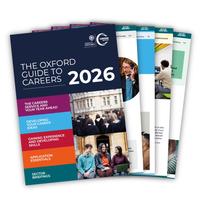You will perform better if you are familiar with case study formats and expectations, and have invested time to practice many different examples. Seek out ways to learn and practice:
- Start by reading some of the books listed in "Our Resources" below and looking at the web-based resources.
- Use the 'virtual internships' available from leading firms on The Forage website to work through some extended management consulting case study materials. These will be more in-depth than a Case Interview but provide highly relevant learning materials and content to help you understand the range and style of issues you may be asked to address.
- Use examples provided by management consulting firms on their recruitment webpages. Many include example case questions with worked answers, and short videos.
- During term, look for employer-led case study workshops advertised on CareerConnect.
- In addition, employers host their own case events across Oxford in Michaelmas term, details of which will be advertised on their own recruitment webpages.
- Join business or consultancy focused student societies.
Attending one or two workshops will help you to get started, but it is important to practice, and to work with others to practice case studies face-to-face. This will help you to get used to:
- thinking aloud;
- showing how your ideas are developing;
- stating the assumptions or constraints you are applying to your thinking; and
- getting used to reviewing and revising the ideas that you have developed in front of someone else.
It is best to partner with other students to practice. Aim to play the role of 'interviewer' as well as 'interviewee' as you will learn different things from watching and listening to others. For example, you can learn the value of a quickly sketched graph or flowchart to support an explanation, or identify the critical information needed to explain a new concept or proposal clearly.
Working with different partners can also be invaluable. Even within a single organisation you will meet many interviewers, who each work in a different way. Modelling this variety in your practice will help as it will expose you to differing work styles and broadens the variety of concepts you are likely to encounter and be comfortable using in your own analyses.
Some student societies run sessions where students work with other students to practice, and may offer a Case Buddy Scheme scheme like the one offered by CapitOx in recent years. Details can be found on their website or contact the society's president for more information.
See the "resources" sections below for materials to get started and practice.





